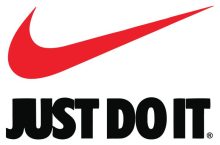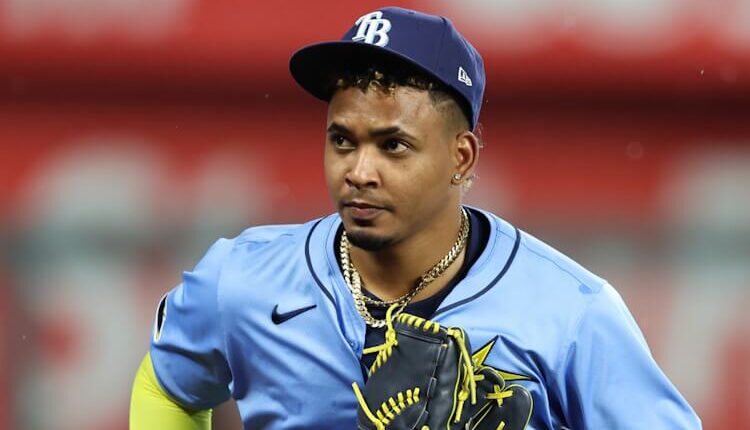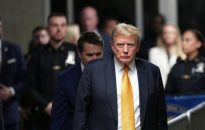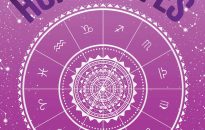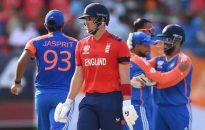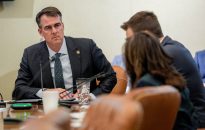Well, the Boys of Summer were still hard at work during that time — and for another month thereafter, by the way — so if you’re just tuning back into baseball in preparation for that other Fantasy season, well, you missed a lot.So here you are, and here am I. And here’s all you missed […]

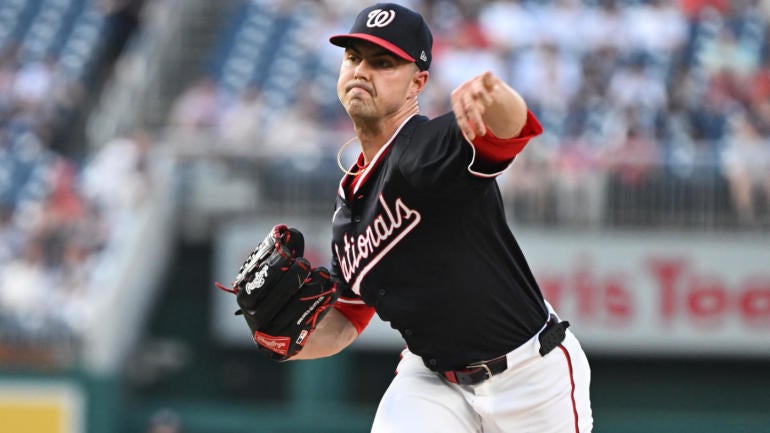
Well, the Boys of Summer were still hard at work during that time — and for another month thereafter, by the way — so if you’re just tuning back into baseball in preparation for that other Fantasy season, well, you missed a lot.So here you are, and here am I. And here’s all you missed during those final two months of baseball season.Remember August? Those back-to-school preparations, whether for you or your child? Those sudden flashbacks to autumns past as the air takes on a subtly familiar earthy scent? Those weeks of binging on Dave Richard content as your Fantasy Football draft draws ever closer?
But guess what? I was tuned in the whole time, paying just as close attention as ever, ready to welcome you back as soon as you came to your senses.
Players who gained the most
- You’re probably aware that Braves rookie Spencer Schwellenbach was beginning to gain traction in Fantasy with his six-pitch arsenal and pinpoint control. After all, his final start in July saw him strike out 11 over seven two-hit innings. What you may not know is that he more or less dominated from that point forward — putting together a 2.47 ERA, 0.96 WHIP and 9.6 K/9 over his final 12 starts — and will likely be drafted as a top-36 pitcher as a result.
- Likewise, Lawrence Butler burst onto the scene with a monstrous July that predictably turned out to be his best month of the season. But it’s not like he faded into obscurity after that. On the contrary, he settled in as a must-start Fantasy option, batting .302 (84 for 278) with 20 homers, 14 steals and a .943 OPS over the final three months. The 24-year-old always offered loud tools, but it’s his 20.6 percent strikeout rate during that three-month stretch that leads me to believe he’s turned the corner.
- Though he wasn’t a prospect of great renown and didn’t do much to change that thinking in his first couple months on the job, Spencer Arrighetti became an integral part of the Astros rotation down the stretch. He kicked off August with consecutive double digit-strikeout efforts and added another at the end of the month, putting together a 2.72 ERA, 1.17 WHIP and 11.4 K/9 over his final 10 appearances.
- Like Arrighetti, Sean Manaea had consecutive double digit-strikeout efforts soon after the All-Star break, and as with Arrighetti, they turned out to be just the tip of the iceberg. Normally, I’d cede to a 32-year-old’s larger track record rather than a 12-start stretch during which he put together a 3.09 ERA, 0.85 WHIP and 9.9 K/9, but there’s more to the story in this case. The first of those double digit-strikeout efforts came when Manaea lowered his release point to mimic Chris Sale’s delivery. He also unveiled a new changeup along the way. Both served to make his fastball more effective, and nothing raises a pitcher’s profile like a more effective fastball.
- Xavier Edwards reintroduced the league to a category of player it hadn’t seen since … Michael Bourn? Juan Pierre? Something like that. In hitting .332 (85 for 256) with one home run and 31 stolen bases in his three months as Marlins shortstop, Edwards was basically the same player he had been at Triple-A Jacksonville the past two years, and yet conventional wisdom suggests pitching has become too overpowering and defensive positioning too sophisticated for that sort of profile to work. Nevertheless, he was the No. 6 shortstop in both points and 5×5 scoring during that time.
- If you tuned out in August, then you probably remember Pete Crow-Armstrong as a strikeout-prone rookie who plays center field like his hair is on fire (which it may be, judging from its bright orange hue). But he actually became a useful Fantasy starter over the final one-third of the season, batting .284 (50 for 176) with seven homers, seven steals and an .803 OPS. The strikeout rate ticked up again late and remains a work in progress, but even so, Crow-Armstrong showed himself to be a player of interest for 2025.
- Perhaps the unlikeliest of breakouts, 28-year-old Bowden Francis unveiled a new splitter and began flirting with a no-hitter every other outing — which sounds like an exaggeration but, if anything, is an understatement. He allowed exactly one hit over seven-plus innings four times during a six-start span in August and September and, in all, had a 1.53 ERA, 0.58 WHIP and 8.5 K/9 after joining the rotation on Aug. 7. The combination of a high fly-ball rate and a low walk rate during that time makes for a profile similar to Shota Imanaga, but even if he winds up being more like Nestor Cortes, Francis is a nice find.
Others who came on strong
- If you were only looking at the top-line numbers through the end of July, you might have mistaken Jackson Chourio for a rookie bust. If you were a little more perceptive than that, you might have noticed that he started to turn things around in June. Suffice it to say he kept it up and wound up hitting .303 with 16 homers, 15 steals and an .883 OPS over the final four months, which made him, overall, the No. 14 outfielder in 5×5 scoring and No. 19 in points. So… not a bust.
- Jackson Merrill followed a similar trajectory, except that his breakthrough June in which he homered nine times was followed by a rough July in which he homered just once. So how did his August and September go? About as well as his June. In all, he hit .299 with 21 homers, nine steals and a .901 OPS over the final four months to finish as the No. 11 outfielder in 5×5 scoring and No. 12 in points.
- A quick glance at Framber Valdez’s final numbers would lead you to believe he’s merely a clock keeping time, but the path toward his usual numbers wasn’t as straightforward as you might think. He ramped up his curveball usage on July 10, his first of three outings in four with 10 strikeouts, and from that point forward, he had a 1.91 ERA, 0.89 WHIP and 10.3 K/9. Does it mean the ground-ball specialist has unlocked a new talent for bat-missing? It’s not the craziest thought.
- When last Fantasy Footballers saw him, Bryan Woo’s was an injury-prone enigma whose effectiveness was limited to four-inning spurts, but his seven longest starts came in his final 11, beginning Aug. 2. Those seven starts were all in excess of six innings, and during that 11-start span, he had a 3.33 ERA, 0.90 WHIP and 8.5 K/9. He was just as effective, in other words, only now with a little length behind it.
- If the last thing you remember about Yusei Kikuchi is that he was traded to the Astros — for a pretty nice haul, actually — then it turns out you missed some of the finest work of his career. The Astros convinced the perennial tease to throw his slider more (about 36 percent of the time vs. 17 percent), and he went on to deliver a 2.70 ERA, 0.93 WHIP and 11.3 K/9 in 10 starts. He has since signed with the Angels, making him no longer under the Astros’ purview.
- You may remember Eugenio Suarez catching fire in July, but seeing as he hit .196 in the previous three months and .221 in the previous four years, you probably dismissed it as an aberration. Well, it turns out he sustained it for the rest of the season, batting .312 with 24 homers and a .974 OPS during the final three months. Given that he cut his strikeout rate to 26 percent during that time (it was closer to 30 percent for that bad four-year stretch), there may be something to it, but then again, he’s 33.
- If your impression of MacKenzie Gore in 2024 is that he came crashing back down to earth after a nice start to the season, you’ll want to take note of his final seven starts. In them, he put together a 1.55 ERA, 0.91 WHIP and 10.0 K/9, throwing 66 percent of his pitches for strikes vs. 61 percent in the 11 starts prior. It may just be that his complicated delivery makes for lengthy mechanical lapses, but he did make reference to the medical staff helping him through an unreported issue near the beginning of the turnaround. He could be poised to break through at age 26.
- Remember Victor Robles, that Nationals outfielder who once rated as a better prospect for them than Juan Soto? He came the closest he ever has to meeting his potential as a near full-timer with the Mariners, batting .329 (69 for 210) with four homers and 29 steals in three months’ time. Those numbers are reminiscent of the ones shortstop Xavier Edwards put up for the Marlins during the same span, but because Robles doesn’t have a history of doing it in the minors year after year, I’m a little more skeptical.
- You may have come to regard Ryne Nelson as an also-ran in the Diamondbacks rotation, but he was basically their ace down the stretch, reaching heights previously thought unreachable by throwing his fastball upward of 60 percent of the time. Repeat viewings may reveal it to be a gimmick, but it did yield a 3.13 ERA, 0.97 WHIP and 8.9 K/9 over his final 13 appearances, seeing him throw strikes at an impressive 69 percent rate.
- If it turns out that Pete Crow-Armstrong’s strong finish puts him out of your price range in this year’s drafts, then Parker Meadows makes for a nice fallback plan. He returned to the Tigers lineup in early August and hit .296 (55 for 186) with six homers, five steals and a .840 OPS the rest of the way. The number that stood out most during that time, though, was the 21 percent strikeout rate. He had been a 29 percent strikeout guy as a major-leaguer before then.
- You might think Nick Martinez is of no consequence given his career through age 34, but he finished 2024 with a 3.10 ERA and 1.03 WHIP. You might say that’s because he spent most of the year in the bullpen, but his numbers improved after joining the rotation for 11 starts down the stretch, making him the eighth-best starting pitcher in points leagues during that time. You might believe it’s all smoke and mirrors, but he did become an elite strike-thrower for the first time last year, trailing only George Kirby with 1.1 BB/9. You might wonder if the Reds will automatically slot him into the rotation this year, but they made him a qualifying offer in the offseason, which he accepted for $21.05 million. That’s not swingman money.
Concerning developments
- You probably thought you had a stud on your hands when C.J. Abrams hit .283 with an .858 OPS over the first three months, but those numbers plummeted to .199 and .610 over the final three months. No wonder he got sent to the minors for the final week, right? Actually, that demotion wasn’t for poor performance but rather him staying out at a casino as late (late?) as 8 a.m., according to reports. So that’s its own concern … or is it an explanation for his struggles?
- Most of Royce Lewis‘ career has led us to believe that injuries are all that can stop him, but those injuries have been so frequent that the sample has remained insignificant. Well, his closeout to 2024 represent the longest uninterrupted stretch of his major-league career, spanning 58 games in all, and he wound up hitting .207 (42 for 203) with six homers and a .620 OPS during it. So who is he really?
- Remember how Steven Kwan hit .368 (84 for 228) over the first three months, earning a starting nod in the All-Star game? His season turned on a dime thereafter, seeing him hit .222 (56 for 252) over the final three months. The final stat line was fine — similar to his rookie 2022 season, in fact — but if you had come to think of him as a Fantasy stud, you might want to reconsider.
- While the overall ERA likely didn’t change much for Zac Gallen from the time you tuned out, something just seemed off for him after he returned from a strained hamstring in late June. In those 17 starts, he put together a 3.99 ERA, 1.34 WHIP and 9.6 K/9. Of greater concern is that he issued 3.9 BB/9, throwing just 62 percent of pitches for strikes with only a 10 percent swinging-strike rate. He was never the most dominant of aces, but those are some pedestrian numbers at best.
- Likely AL Rookie of the Year Luis Gil had a 1.82 ERA as late as June 8. That’s when he hit his first little rough patch, and while you may be under the impression that he righted the ship around the All-Star break, suffice it to say he stumbled to the finish line, putting together a 4.47 ERA and 1.47 WHIP over his final nine starts. Of course, the numbers look even worse if you back him up 17 starts, during which time he had a 4.92 ERA and 1.42 WHIP. A lot of people are going to spend a lot of draft capital on what amounts to a good one-third of a season.
- Jared Jones was the rookie hurler inviting all the lofty comparisons early on, but the truth is he wasn’t so overpowering after his first 10 starts, his swinging-strike rate going from 18 percent then to 11 percent afterward. He managed to muddle through for a while, but the wheels came off with an IL stint for a strained lat, after which he had 5.87 ERA in six starts. The raw stuff is promising, but the arsenal may not be deep enough to sustain him as of now.
- If you were convinced Taj Bradley broke out as an ace during a nine-start stretch in which he put together a 0.82 ERA, 0.89 WHIP and 10.6 K/9, well, you’re in for a rude awakening when you see his final numbers. What followed was a six-start stretch with a 9.85 ERA, 1.84 WHIP and 7.6 K/9. The culprit for the about-face appeared to be his splitter, which lost several inches of vertical movement during that time. It leveled off some in September, but he was merely decent then. The fear is that he’s another Reid Detmers, who can be dominant when his best pitch (in his case, the slider) is on but gets shellacked when it isn’t.
- Maybe I’m nitpicking seeing as the guy broke out as completely as I could have hoped for, but Cole Ragans saw a notable dip in velocity in late June (roughly the halfway point) that continued for the rest of the season. His numbers in those 15 starts — a 3.26 ERA, 1.13 WHIP and 10.5 K/9 — were nothing to sneeze at, so again, it could mean nothing. But losing velocity is rarely a good sign, particularly when a velocity boost in 2023 is what first put Ragans on the map in the first place.
- The early successes of the Red Sox pitching staff ultimately couldn’t hold up to scrutiny. Kutter Crawford crashed the hardest, going from a 2.17 ERA in his first 10 starts, when the ball wasn’t carrying as well and his fly-ball tendencies were an asset, to a 5.37 ERA in his final 23 starts. Tanner Houck still found some success as a ground-ball pitcher, but he went from 8.8 K/9 and 1.6 BB/9 in the first three months to 6.2 K/9 and 3.7 BB/9 in the final three.
- Brandon Pfaadt may have seemed like he was trending up when you tuned out, with his ERA finally dipping below 4.00 in late July, but it was 6.60 over his final 12 starts. His final 4.71 mark is about a run worse than all the ERA estimators, but it may simply be that he doesn’t have a good enough secondary arsenal to make up for his pedestrian fastball.
- You may have thought the catcher position was in a good spot, but the second half raised concerns for some of the biggest names there. Adley Rutschman hit .194 with a .564 OPS over the final three months. Logan O’Hoppe hit .196 with a .578 OPS after the All-Star break. Will Smith’s struggles date all the way back to May 1, after which point he hit .216 with a .708 OPS. Rutschman’s collapse at least seemed to coincide with him taking a foul tip off the hand, an injury that cost him only a game in late June, and it’s possible, given the nature of catching, that O’Hoppe and Smith were both also dealing with some affliction or another. Still, it makes it harder to go the extra mile for a “safe” bat at the position.
- Generational pitchers Justin Verlander, Max Scherzer and Clayton Kershaw all had trouble taking the mound down the stretch and weren’t so effective when they did. All three are expected back for 2025, but we should effectively retire them for Fantasy purposes.
Sighs of relief
- Matt Olson followed up the best year of his career with one of the worst, falling short of 30 homers for the first time since 2018 (excluding 2020, of course). But from Aug. 1 on, he was the top first baseman in Fantasy, batting .289 (58 for 201) with 12 homers and a .933 OPS. Notably, he cut his strikeout rate to 18.6 percent during that stretch. It was 28.1 percent prior.
- Corbin Carroll hit .197 with a .573 OPS over the first two months, which is about as bad as you’ll ever see from a first-round pick. He hit .236 with a .772 OPS over the next two months, which was definite improvement but probably not enough to change your impression of his season. He hit .263 with a .918 OPS over the final two months while also mashing 14 of his 22 homers, which was enough to make him the No. 7 outfielder in 5×5 scoring for the year and the No. 5 in points scoring. And just like that, all concerns about his shoulder have dissipated.
- Julio Rodriguez wasn’t able to salvage his season as completely as Carroll, but he did wind up being 20/20 man thanks to a September surge that saw him hit .328 (39 for 119) with seven homers and six steals. If his second half wasn’t interrupted by a high ankle sprain, he may well have had the time to bring his numbers up to first-round standards.
- Yet another high-end outfielder who’s become accustomed to slow starts, Michael Harris didn’t have much time to course correct, missing two months midseason with a strained hamstring. He was slow out of the gate when he finally returned in mid-August but went on to hit .316 (36 for 114) with eight homers and a .923 OPS in September.
- I’ve spoken of Jackson Chourio and Jackson Merrill already, but Wyatt Langford was the most hyped of the rookie hitters and didn’t finish with numbers as impressive. But he did save his best for last, batting .300 (30 for 100) with eight homers, seven steals and a .996 OPS in September. A post-hype breakout may be in the works for 2025.
- Each of Kyle Tucker and Fernando Tatis suffered a stress fracture in his leg midseason and wound up missing multiple months, but rest assured that both came back in September looking like the first-round fixtures they are, with Tucker batting .365 (23 for 63) with four homers and one steal and Tatis batting .267 (24 for 90) with seven homers and three steals.
- There was some concern during a rocky first two months that Manny Machado would never be the same following offseason elbow surgery or perhaps even that he was on the decline at age 31, but the way he closed out the season put such notions to rest. You may have witnessed the start of it in June and July, but August and September were just as strong, leading to him hitting .294 with 24 homers, eight steals and an .879 OPS across those four months. He doesn’t deserve to be drafted that far behind Rafael Devers, but he likely will be.
- Dansby Swanson’s 2024 season will go down as one of his worst, but at least for the final two months, he seemed positively normal again, batting .283 (53 for 187) with seven homers, 12 steals and an .822 OPS.
- Swanson’s double-play partner, Nico Hoerner, also did the sorts of things in August and September that he was expected to do all along, batting .316 (61 for 193) with three homers, 13 doubles, 14 steals and a .786 OPS. Better late than never, right?
- Tommy Edman’s slow recovery from wrist surgery, which seemed like it might never end, eventually did following his trade to the Dodgers, where he helped to stabilize center field and shortstop, arguably the two most critical non-battery positions. He also looked just as we remembered him at the plate, perhaps even contributing a little more power in his 37 games played, which positions him to be a viable Rotisserie target again in 2025.
- Even with the Rangers out of it, Jacob deGrom opted to see his recovery from Tommy John surgery all the way through, rejoining the rotation for three starts down the stretch. They were all on the shorter side, with the longest being only four innings, but he still looked the part of an ace with a 1.69 ERA, 1.13 WHIP and 11.8 K/9. It’s reason to draft the 36-year-old with renewed confidence next year, though durability remains a concern.
- You’d be forgiven for thinking Trevor Story was done for the year when he dislocated his left shoulder in April, given that that’s what all the reporting indicated at the time, but he ended up making it back for most of September. He played reasonably well, too, batting .270 (17 for 63) with two homers, five steals and a .790 OPS. You could quibble about his exit velocities and strikeout rate, but there’s no doubt he’s more draftable than if he hadn’t returned at all.
- Making his way back from Tommy John surgery, Shane Baz didn’t seem to have a feel for his best pitch, the slider, but he found a way to succeed in spite of it. Relying more on his curveball and changeup, he had a 2.09 ERA, 0.74 WHIP and 7.7 K/9. The ERA estimators aren’t so convinced it’s a formula for long-term success, but the adaptability was nice to see from a pitcher with so much growth ahead of him still.
Fakeouts revealed
- Ranger Suarez looked to be on a Cy Young trajectory early on, boasting a 1.83 ERA as late as June 29, but he stumbled into the All-Star break and wound up having a 6.17 ERA and 1.70 WHIP in his final 12 starts. He missed a month with back soreness during that time but showed no improvement after returning. His final four starts saw him deliver a 7.79 ERA while issuing 5.2 walks per nine innings.
- Looking back, it was mostly a monster April — a bad month for hitters overall, mind you — that propelled Alec Bohm to Fantasy stardom. Thereafter, he hit .258 with a .713 OPS, looking particularly feeble with a .238 batting average and .629 OPS over the final two months.
- Before Xavier Edwards, it was Brice Turang reintroducing the league to the slap-hitting speedster, but his .292 batting average in the first three months gave way to a .214 batting average in the next three, putting him at .254 for the year. He still had 50 stolen bases, his pacing holding more or less steady through the bad months, but seeing as he hit .218 in 2023, those bad months might be the truer indicator of his talents.
- Heliot Ramos‘ big June propelled him to the All-Star game and earned him the benefit of the doubt at a weak position, and it’s worth noting that he remained productive through July as well. It was August and September that saw him come crashing down again with a .241 batting average and .707 OPS. Maybe there simply weren’t enough left-handers, who he throttled to the tune of a .370 batting average and 1.189 OPS compared to .240 and .673 against righties.
- Another surprise breakthrough at an outfield position in desperate need of such, Alec Burleson stumbled to the finish line in a way that raises doubts about his 2025 status. He hit .202 (17 for 84) with no homers and a .510 OPS in September, bringing his batting average down to .269 for the year. He needs to be a clear plus in batting average given his limited over-the-fence pop and poor on-base skills.
- Depending on when exactly in August you ducked out, you may be under the impression that Jackson Holliday’s miserable debut was confined to April. After all, he hit a grand slam in his return to the majors July 31 and four home runs in his next nine games. But he hit none in his final 40 games, batting .200 (24 for 120) with a 31 percent strikeout rate.
- Jake Irvin started out strong for the Nationals, becoming a sneaky pickup off the waiver wire in Fantasy, and was limiting damage so well on balls in play that it seemed like there could be something to it. But the final two months effectively crushed what limited enthusiasm there was for him. He had a 6.52 ERA in those 11 starts compared to a 3.44 ERA prior.
- Did Mitch Keller fake us out again? Last year, he had a 3.31 ERA on July 17 and a 5.59 ERA thereafter. This year, he had a 3.20 ERA on Aug. 8 and a 7.29 ERA thereafter.
Lingering questions
- Tyler Glasnow seemed like he might shed the injury-prone label when he cruised to a career-high 134 innings on Aug. 11, but that ended up being the last start he made, purportedly because of elbow tendinitis that was later reclassified as a full-blown sprain. The expectation is that he won’t need surgery, but whenever an elbow ligament is involved, that worst-case outcome is like a sword of Damocles. To whatever degree you normally discount Glasnow for injury, make it double next year.
- The White Sox continued to protect Garrett Crochet at all costs, never once allowing him to go beyond four innings over the final three months. It made sense given that preserving his trade value was their only real move, but his ERA did go up during that time. A particularly bad outing was largely to blame, though. He still had 13.7 K/9 and a 17 percent swinging-strike rate. Since we’re all just assuming he can crank it back up again when asked, you should still regard him as a potential ace, particularly now that he’s with the Red Sox, a team with something to play for.
- Rafael Devers didn’t play the final week of the season because of inflammation in both shoulders, which may not sound like a serious injury, but it weighed on him for most of the season. More concerning is that it really showed up in his bat speed and arm strength over the final two months, during which he hit .205 (33 for 161) with four homers and a .624 OPS. An MRI revealed no structural damage, in which case an offseason’s rest is likely enough to cure him, but check back to see if Devers is struggling to catch up to fastballs this spring.
- When eventual NL Cy Young winner Chris Sale showed diminished velocity in a Sept. 19 start at the Reds, the Braves said they would give him some extra rest, reserving him until they were faced with elimination. But then when actually faced with elimination in the second game of a doubleheader Sept. 30, they revealed that he actually suffered back spasms in that Cincinnati start and, in fact, has been contending with them off and on all year. Sounds a little fishy, doesn’t it? Sale’s absence ultimately extended into the playoffs, which is certain to renew health concerns for him heading into 2025.
- When Austin Riley broke his hand on a hit by pitch in mid-August, it wasn’t immediately thought to be a season-ending injury and certainly not one that would sideline him for the entire postseason. But a few weeks later, the Braves indeed declared him out for all of 2024 and only then revealed that the fracture was to his hamate bone, the most notorious of all the bones in the hand. A hitter who breaks his hamate bone is often slow to regain his power stroke. It may not be as much of an issue for Riley, seeing as he’ll have an entire offseason to recover, but it is something to bear in mind.
- Ozzie Albies was able to make it back from a fractured wrist in September, but he couldn’t swing from the left side, forcing him to abandon switch-hitting for the nine games he was healthy. He went 7 for 38 (.184) during that time, albeit with two home runs.
Call-ups to consider
- Jackson Jobe, who’s widely regarded as the game’s top pitching prospect, came up to make two relief appearances in the season’s final week, which may not have happened if the Tigers weren’t a part of the playoff picture. It pits him as a rotation favorite for 2025, which he’ll enter with relief pitcher eligibility.
- Dylan Crews arrived in late August, becoming the second high-profile addition to the Nationals outfield behind James Wood. He slashed only .218/.288/.353 in 31 games but swiped 12 bags and kept his strikeout rate at a respectable 19.7 percent.
- After much bellyaching from Yankees fans and pundits, Jasson Dominguez turned out to be less than the godsend he was billed to be when he arrived for good in September. Factoring in the one game he played in August, he wound up hitting .179 (10 for 56) with two homers and five steals. Even so, the left field job appears to be his moving forward.
- After being included on the Rays postseason roster a year earlier, Junior Caminero finally returned to the majors in mid-August and started almost every game thereafter. His performance was merely decent — he hit .248 (41 for 165) with six homers and a .724 OPS — but his quality-of-contact readings were as good as advertised. His strikeouts were also well under control.
- After opening eyes with a 0.91 ERA, 0.57 WHIP and 14.3 K/9 in his seven starts between Double- and Triple-A, Kumar Rocker joined the Rangers rotation in mid-September to mixed results. His slider looked like a one-of-a-kind weapon in his first start, contributing to his 17 whiffs on 74 pitches, but played down in his next two. Having recently recovered from Tommy John surgery, he represents one of several exciting rotation options for the Rangers in 2025.
- Kyle Manzardo made little impact for the Guardians during his first major-league stint in May and June, but he returned Sept. 1 to hit .270 (17 for 63) with five home runs and an .873 OPS. His playing time was fairly sporadic and could remain so with the Guardians also having Carlos Santana to man first base, but Manzardo has at least shown he belongs now.
- Connor Norby never stood a chance of playing every day for the Orioles but settled in at third base with the Marlins, batting .247 (36 for 146) with seven homers in 36 games. Ultimately, he struck out too much to be a high-priority draft pick in 2025, but the opportunity is a welcome one for a player with a solid minor-league track record.
- Luisangel Acuna, the younger brother of Ronald Acuna, got a chance to fill in for an injured Francisco Lindor down the stretch and made a strong impression, going 12 for 39 (.308) with two doubles, a triple and three homers in 14 games. He slashed only .258/.299/.654 at Triple-A Syracuse, contributing mostly in the way of speed and defense, but scouting reports have hinted at untapped power in his 5-foot-8 frame. He’s a name to know, but he enters a crowded infield situation this year.
Bullpen developments
- Camilo Doval seemed as safe as closers get at one point, but the Giants pulled the plug on him in mid-August, even sending him to the minors for a spell. They appear to have upgraded with Ryan Walker, a right-hander with an almost sidearm delivery who went 10 for 10 on save chances down the stretch and finished with a 1.91 ERA, 0.85 WHIP and 11.1 K/9.
- David Bednar’s 2024 seemed like it was on the rocks from the beginning, when he missed most of spring training with a lat strain, and the Pirates finally did remove him from the closer role in August. Unlike Doval with the Giants, though, Bednar is likely first in line for the role this year given that his replacement, Aroldis Chapman, has since moved on.
- The Cubs also looked in-house for a closer upgrade after the trade deadline, anointing rookie Porter Hodge following the release of Hector Neris. The right-hander went 8 for 9 on save chances during that time, finishing with a 1.88 ERA, 0.88 WHIP and 10.9 K/9.
- Of the relievers the Royals acquired at the trade deadline, Lucas Erceg ended up being the one to ascend to the closer role, partly because Hunter Harvey was sidelined by a back strain. And it’s fair to say Erceg has a lock on the role after putting together a 2.88 ERA, 0.84 WHIP and 11.2 K/9 in his two months with the Royals.
- Paul Sewald’s diminished stuff eventually came to a head, and the Diamondbacks were forced to make a change at closer. Hard-throwing sinkerballer Justin Martinez quickly ascended to the role, but his ground-ball tendencies and shaky control made him susceptible to stressful innings, and by the end, it wasn’t clear what the Diamondbacks were looking to do in the ninth. Left-hander A.J. Puk, who was acquired from the Marlins earlier in the year, would seem to be a fine choice. He had a 1.32 ERA, 0.73 WHIP and 14.2 K/9 in his 30 appearances for the Diamondbacks.
- Another promising “maybe” at closer for this year is Edwin Uceta. The Rays went the by-committee route after Pete Fairbanks was lost to a lat strain in mid-August, but Uceta converted the four save chances he got. In all, he had a 1.51 ERA, 0.82 WHIP and 12.3 K/9 on the year.



